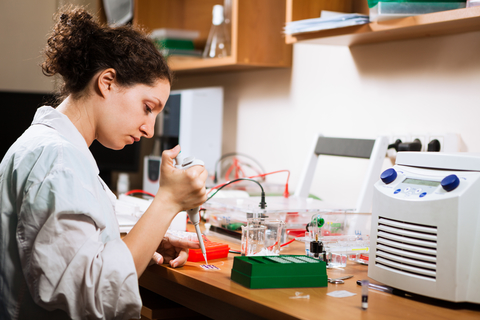A small piece of paper can make water consumption safer

A revolutionary microbial-based paper sensor has been developed by researchers at the University of Bath, creating a cheap, sustainable and recyclable device for detecting toxic compounds in water.
Access to safe drinking water is one of the UN’s Sustainable Development Goals, since it is a basic human right and is crucial to combating inequalities and reducing poverty. This right is yet to be achieved in the world’s poorest countries, and one of the reasons for this is the lack of easily deployable and affordable water testing tools.
The University of Bath reports an interdisciplinary team of researchers from its Water Innovation & Research Centre (WIRC @ Bath) and Centre for Sustainable Chemical Technologies (CSCT), has published new findings reporting the proof of concept for a device which in the near future could supply some of the world’s poorest countries with a low cost, simple and rapid way of testing a water supply.
Inspired by the simplicity of litmus paper, commonly used for the rapid assessment of acidity in water, this innovative technology consists of a microbial fuel cell (MFC), obtained by screen printing biodegradable carbon electrodes onto a single piece of paper.
An MFC is a device that uses the natural biological processes of “electric” bacteria, attached to the carbon electrodes, to generate an electric signal. When these bacteria are exposed to polluted water, a change in the electric signal occurs, which can be used as a warning message that the water is unsafe to drink. The device has the potential not only to make water assessment rapid and cheap, each device is expected to cost no more than £1, but it is also environmentally friendly since the paper sensor is made of biodegradable components. The device is also easy to use and transport, weighing less than 1g.
The University of Bath researchers are now investigating how to link up the sensor with an electronic device such as a mobile phone, via a wireless transmitter, for a quick and user friendly way of identifying if a water supply is safe to use.
Lead author and Senior Lecturer in the University of Bath’s Department of Chemical Engineering, WIRC @ Bath and CSCT, Dr Mirella Di Lorenzo, said “This work could lead to a revolutionary way of testing water at the point of use, which is not only green, easy to operate and rapid, but also affordable to all. This type of research will have a significant positive impact, especially benefitting those areas where access to even basic analytic tools is prohibitive. This device is a small step in helping the world realise the United Nations call to ensure access to safe drinking water and sanitation as a human right.”
Co-author and Reader in the University of Bath’s Department of Chemistry and CSCT, Dr Janet Scott, said “This is a great example of how scientists and engineers working closely together can develop useful technologies with the potential to impact positively on the lives of citizens globally – we were able to design the materials that facilitated the production of these devices and the engineering partners designed the devices.”
The multidisciplinary project was led by researchers in the University of Bath’s Water Innovation & Research Centre (WIRC @ Bath) and Centre for Sustainable Chemical Technologies (CSCT). It also involved researchers from the University of Bath’s Department of Mechanical Engineering and a partnership with the Brazilian Nanotechnology National Laboratory in the State of Sao Paulo.
This research received funding from the Global Challenges Research Fund (GCRF) through the Engineering and Physical Sciences Research Council (EPSRC).








